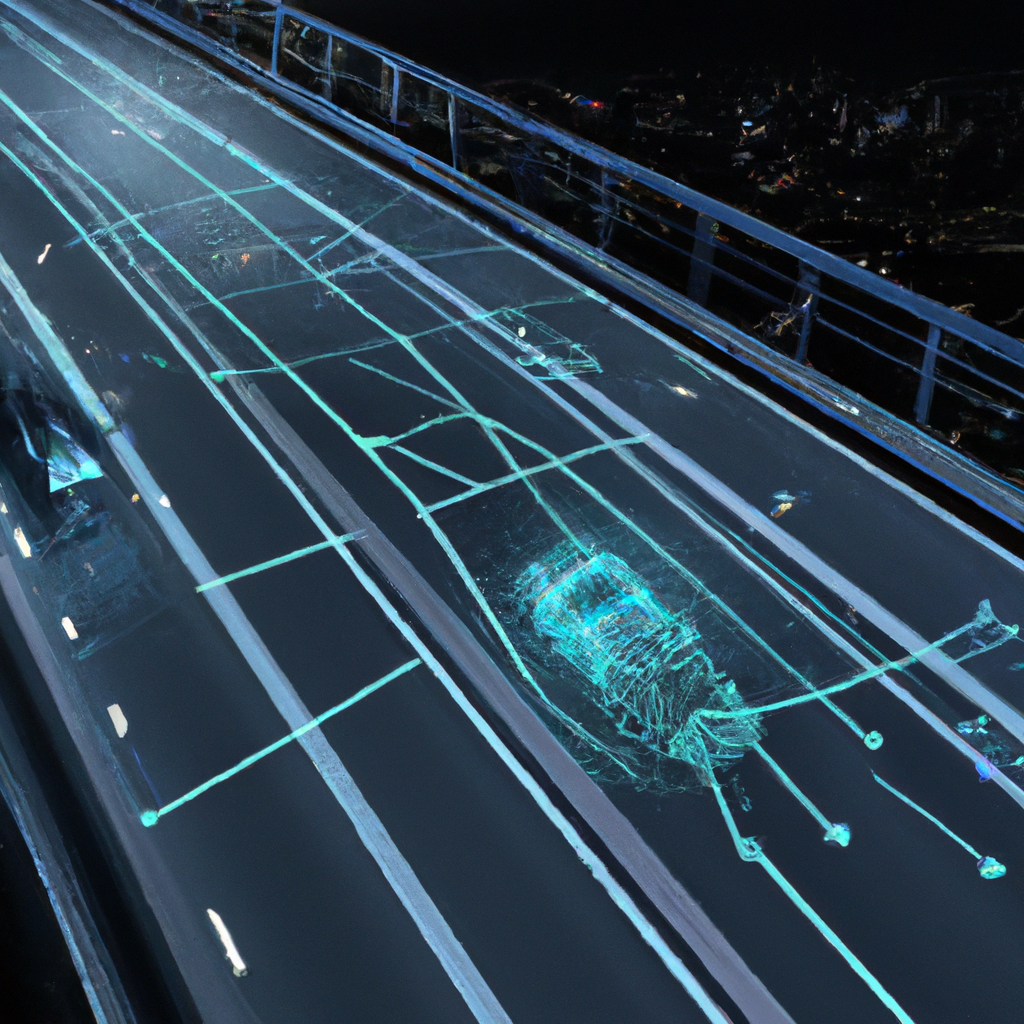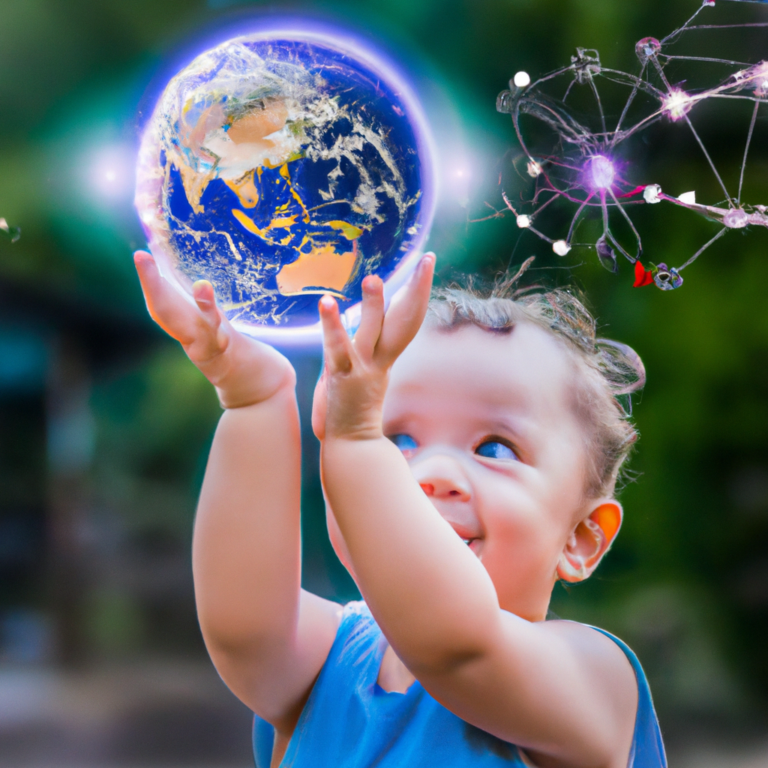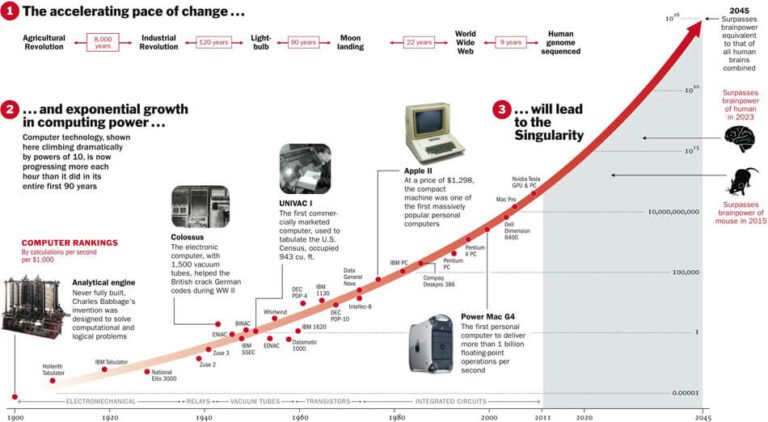AI In Transportation

Imagine a world where transportation seamlessly flows, where traffic jams become a thing of the past, and where accidents are drastically reduced. This is the promising future that AI in transportation offers. By harnessing the power of artificial intelligence, transportation systems can become smarter, more efficient, and safer than ever before. From self-driving cars and predictive maintenance to optimized traffic flows and personalized travel recommendations, AI has the potential to revolutionize the way we move from point A to point B. In this article, we will explore the exciting advancements and applications of AI in transportation, highlighting the benefits it can bring to individuals, communities, and the environment. Transportation is an essential aspect of our daily lives, whether it’s commuting to work, running errands, or traveling long distances. With the rapid advancements in technology, Artificial Intelligence (AI) has emerged as a game-changer in the transportation industry. AI, a branch of computer science, enables machines to perform tasks that typically require human intelligence. In this article, we will explore the various benefits and applications of AI in transportation, along with the challenges and potential future possibilities it presents.
Benefits of AI in Transportation
Improved Safety
One of the key advantages of AI in transportation is improved safety. AI-powered technologies can analyze vast amounts of data in real-time, enabling vehicles to make split-second decisions and avoid accidents. For example, autonomous vehicles equipped with AI can detect pedestrians, cyclists, and other vehicles, resulting in fewer accidents caused by human error. Additionally, AI systems can continuously monitor driver behavior, alerting them to potential hazards such as drowsiness or distraction.
Efficient Traffic Management
AI plays a crucial role in optimizing traffic management, reducing congestion, and minimizing travel time. AI algorithms can analyze historical and real-time traffic data to predict traffic patterns, allowing transportation agencies to efficiently allocate resources and adjust traffic signal timings. By using AI-powered predictive models, traffic flow can be optimized, ensuring smoother journeys and reducing fuel consumption.
Optimized Route Planning
AI algorithms can analyze multiple factors such as traffic conditions, time of day, and road closures to determine the most efficient routes for vehicles. This not only saves time but also reduces fuel consumption and emissions. Whether it’s a delivery truck, a taxi, or a personal vehicle, AI can provide real-time route recommendations based on current conditions, ensuring faster and more efficient transportation.
Enhanced Vehicle Performance
AI-enabled systems can monitor the performance of vehicles in real-time, detecting any potential issues and providing proactive maintenance recommendations. By analyzing data from sensors and historical vehicle performance, AI algorithms can identify patterns and predict maintenance requirements, leading to reduced downtime and increased vehicle reliability. This proactive approach helps enhance vehicle performance and reduces the risk of breakdowns while on the road.
Minimized Environmental Impact
With growing concerns about climate change and air pollution, minimizing the environmental impact of transportation is crucial. AI can contribute to reducing emissions by optimizing routes, enabling smoother traffic flow, and promoting the use of electric or hybrid vehicles. By analyzing data on energy consumption, traffic patterns, and driver behavior, AI can suggest eco-friendly driving techniques and promote sustainable transportation practices.
Reduced Costs
AI technologies offer cost-saving benefits in transportation. Efficient traffic management reduces fuel consumption and operating costs for logistics companies, while optimized route planning leads to shorter travel distances and reduced fuel expenses for individual commuters. Additionally, AI-powered predictive maintenance can prevent costly breakdowns and improve the overall lifespan of vehicles. By reducing accidents and associated costs, AI contributes to significant savings for insurance companies and accident victims.
AI Applications in Transportation
Self-Driving Vehicles
Self-driving vehicles, also known as autonomous vehicles, are a prominent application of AI in transportation. These vehicles leverage AI algorithms and sensor technologies to navigate, detect obstacles, and make informed decisions on the road. Self-driving vehicles have the potential to improve road safety, reduce traffic congestion, and increase mobility for individuals who are unable to drive. While still in the testing and development phase, self-driving vehicles are expected to revolutionize the way we commute in the future.
Traffic Prediction and Management
AI plays a crucial role in predicting and managing traffic congestion. By analyzing historical and real-time traffic data, AI algorithms can identify traffic patterns and predict peak hours, allowing transportation agencies to adjust traffic signal timings and allocate resources efficiently. This improves traffic flow, reduces congestion, and enhances overall transportation efficiency.
Smart Traffic Lights
Traditional traffic lights operate on fixed timings, leading to traffic inefficiencies and congestion. AI technologies can optimize traffic signal timings based on the current traffic conditions, resulting in smoother traffic flow and reduced waiting times at intersections. With AI-enabled smart traffic lights, the timing can be adjusted in real-time to respond dynamically to changing traffic patterns, minimizing delays and improving overall traffic management.
Automated Parking Systems
Finding parking spaces in crowded urban areas can be a challenge. AI-powered automated parking systems can optimize parking space utilization and provide real-time information on available parking spots. These systems can guide drivers to vacant spaces, reducing the time spent searching for parking. Automated parking systems not only enhance convenience for drivers but also increase parking efficiency, ensuring that parking spaces are utilized optimally.
Smart Public Transportation
AI enhances the efficiency and reliability of public transportation systems. By analyzing data on passenger demand, traffic conditions, and alternative routes, AI algorithms can optimize bus schedules and routes to ensure timely and efficient transportation. AI can also help improve passenger experience by providing real-time information on bus arrival times and any potential disruptions, enhancing the overall reliability and convenience of public transportation.

AI and Urban Mobility
Reduced Congestion
Urban areas often face congestion challenges due to increased population and limited road infrastructure. AI can alleviate congestion by optimizing traffic flow, predicting traffic patterns, and adapting traffic signal timings. By implementing AI-based solutions, transportation agencies can reduce congestion, minimize travel times, and enhance urban mobility.
Improved Air Quality
The transportation sector is a major contributor to air pollution. Implementing AI in transportation can lead to improved air quality by promoting sustainable practices such as eco-routing, optimizing traffic flow, and encouraging the use of electric or hybrid vehicles. By reducing emissions and mitigating the environmental impact of transportation, AI contributes to cleaner and healthier urban environments.
Integrated Mobility Services
AI facilitates the integration of various modes of transportation, including public transportation, ridesharing, and biking or walking. By analyzing data on transportation patterns, AI algorithms can suggest the most efficient and seamless multimodal routes for commuters. Integrating different modes of transportation not only improves accessibility and convenience but also reduces reliance on private vehicles, leading to reduced congestion and environmental impact.
Autonomous Delivery Systems
AI-powered autonomous delivery systems have the potential to transform the logistics industry. By leveraging AI algorithms, delivery vehicles can optimize routes, making last-mile deliveries more efficient and cost-effective. Additionally, autonomous drones can be deployed for small-scale deliveries, reducing delivery times and lowering the carbon footprint associated with traditional delivery methods.
Challenges of Implementing AI in Transportation
While AI brings numerous benefits to the transportation industry, its implementation is not without challenges. Some of the key challenges include:
Legal and Regulatory Framework
As autonomous vehicles and other AI-powered technologies continue to advance, there is a need for coherent legal and regulatory frameworks. Addressing liability, safety standards, data privacy, and ethical considerations are essential to ensure the safe and responsible implementation of AI in transportation.
Security and Privacy Concerns
AI systems in transportation rely on vast amounts of data, including personal information and real-time traffic data. Ensuring data security and protecting user privacy are critical considerations. Robust cybersecurity measures must be in place to prevent data breaches, unauthorized access, and potential misuse of personal information.
Ethical Considerations
AI systems need to make ethical decisions when faced with complex scenarios on the road. Issues of morality, liability, and decision-making algorithms must be properly addressed to ensure that AI-powered vehicles and transportation systems prioritize human safety and adhere to ethical standards.
Infrastructure Upgrades
Implementing AI in transportation requires appropriate infrastructure upgrades. For example, the installation of smart traffic lights, sensors, and communication networks is essential for the efficient functioning of AI-powered transportation systems. These infrastructure upgrades may require significant investments and coordination among stakeholders.

AI and Freight Transportation
Automated Freight Trucks
Freight transportation stands to benefit significantly from AI technologies. Automated freight trucks can optimize routes, minimize fuel consumption, and enhance delivery efficiency. With AI enabling autonomous operation and intelligent decision-making, freight transportation can become more cost-effective, reliable, and environmentally sustainable.
Smart Cargo Tracking
AI-powered cargo tracking systems provide real-time information on the location, condition, and status of freight. By using sensors, GPS, and AI algorithms, cargo tracking systems enable logistics companies to monitor the movement of goods, optimize supply chain operations, and enhance overall efficiency.
Predictive Maintenance
AI can revolutionize the maintenance practices of freight transportation by enabling predictive maintenance. By continuously monitoring the performance of trucks and analyzing data from sensors and historical records, AI algorithms can predict maintenance requirements, identify potential issues, and prompt proactive maintenance actions. This predictive approach reduces downtime, improves fleet reliability, and lowers maintenance costs.
Smart Warehousing
AI technologies can enhance the efficiency and accuracy of warehousing operations. Automated systems powered by AI can optimize inventory management, streamline order fulfillment processes, and improve warehouse layout for maximum space utilization. By using AI for tasks such as inventory tracking, order picking, and routing, warehouses can operate more efficiently, leading to cost savings and improved customer satisfaction.
Impact of AI on Public Transportation
Improved Service Efficiency
AI enables public transportation agencies to optimize routes, schedules, and resources. By leveraging real-time data and AI algorithms, public transportation services can respond dynamically to changing demands and ensure efficient service delivery. This improves the reliability and efficiency of public transportation systems, leading to increased ridership and improved overall service quality.
Enhanced Passenger Experience
AI technologies can significantly enhance the passenger experience in public transportation. AI-powered systems can provide real-time information on bus arrivals, delays, and alternative routes, allowing passengers to make informed decisions about their journeys. Additionally, AI can be used to develop user-friendly mobile applications that facilitate ticketing, provide navigation assistance, and offer personalized recommendations for commuting.
Safety and Security Enhancements
AI can improve the safety and security measures in public transportation systems. By utilizing video surveillance cameras and AI-powered image recognition, transportation agencies can identify and respond to potential security threats in real-time. AI can also be integrated with emergency response systems to alert authorities and provide immediate assistance during emergencies.
Demand-Responsive Transportation
AI enables demand-responsive transportation, where services adapt in real-time based on passenger demands. By analyzing data on passenger travel patterns and dynamically adjusting routes and schedules, transportation agencies can provide flexible and personalized transportation options. This approach improves accessibility and addresses the specific needs of passengers, particularly in areas with limited public transportation infrastructure.
AI in Traffic Management
Real-Time Traffic Monitoring
AI technologies enable real-time monitoring of traffic conditions. By analyzing data from various sources such as traffic cameras, sensors, and crowd-sourced information, AI algorithms can provide up-to-date information on traffic congestion, accidents, and alternative routes. Real-time traffic monitoring helps drivers make informed decisions and assists transportation agencies in managing traffic flow efficiently.
Adaptive Traffic Control Systems
Traditional traffic control systems rely on fixed timing patterns, which may not be effective in dynamically changing traffic conditions. AI-based adaptive traffic control systems analyze real-time data on traffic patterns and adjust signal timings accordingly. By dynamically optimizing traffic signal timings, adaptive traffic control systems significantly improve traffic flow and reduce congestion.
Accident Detection and Response
AI-powered systems can detect and respond to accidents in real-time, enabling faster emergency response and reducing the severity of accidents. By analyzing data from various sources such as traffic cameras and social media feeds, AI algorithms can detect anomalies and identify potential accidents. This early detection allows authorities to respond promptly, minimizing the impact on traffic flow and ensuring a quick recovery.
Intelligent Transportation Systems
Intelligent Transportation Systems (ITS) leverage AI technologies to improve the overall efficiency and safety of transportation networks. ITS encompasses various applications such as traffic management, vehicle-to-vehicle communication, and advanced driver assistance systems. By integrating AI into transportation systems, ITS enables smoother traffic flow, reduces congestion, and enhances overall transportation efficiency.
AI and Ride-Hailing Services
Efficient Matching Algorithms
AI plays a critical role in ride-hailing services by optimizing the matching of drivers and passengers. AI algorithms consider factors such as location, passenger preferences, and driver availability to ensure efficient and timely matches. By minimizing wait times and maximizing driver utilization, AI-powered matching algorithms contribute to a seamless and reliable ride-hailing experience.
Dynamic Pricing Strategies
AI enables ride-hailing services to implement dynamic pricing strategies based on real-time demand and supply conditions. By analyzing data on passenger demand, traffic conditions, and driver availability, AI algorithms can automatically adjust prices to balance supply and demand. This approach ensures fair pricing for passengers while incentivizing drivers to be available during peak demand periods.
Predictive Demand Forecasting
AI-powered predictive models can accurately forecast passenger demand, allowing ride-hailing services to optimize resource allocation and plan for fluctuations in demand. By analyzing historical data, weather conditions, and special events, AI algorithms can predict peak hours and allocate drivers accordingly. This improves efficiency, reduces wait times, and enhances overall customer satisfaction.
Enhanced On-Demand Mobility
AI technologies enhance on-demand mobility by providing personalized recommendations for transportation options. By analyzing user preferences, travel history, and real-time data on available modes of transportation, AI algorithms can suggest the most suitable transportation options for individual passengers. This personalized approach improves access to transportation and encourages the use of sustainable modes of travel.
AI in Sustainable Transportation
Electric and Hybrid Vehicles
AI contributes to the widespread adoption of electric and hybrid vehicles by optimizing their energy consumption and improving range management. AI algorithms can analyze data on driving conditions, traffic patterns, and battery performance to optimize energy usage and maximize the range of electric and hybrid vehicles. By promoting energy-efficient driving techniques, AI helps reduce emissions and increase the viability of sustainable transportation options.
Energy Optimization
AI technologies enable energy optimization in transportation systems. By analyzing data on energy consumption, traffic patterns, and infrastructure conditions, AI algorithms can suggest energy-saving measures such as optimizing traffic signal timings, encouraging eco-driving techniques, and promoting the use of alternative fuels. Energy optimization reduces greenhouse gas emissions and promotes sustainability in transportation.
Eco-Routing
AI algorithms can suggest eco-friendly routes that minimize fuel consumption and reduce emissions. By considering factors such as traffic conditions, road gradients, and fuel efficiency of vehicles, AI can provide real-time eco-routing recommendations. This approach not only saves fuel costs but also contributes to a greener and more sustainable transportation system.
Smart Charging Infrastructure
AI technologies improve the efficiency and usability of electric vehicle charging infrastructure. By analyzing data on charging station availability, user preferences, and energy demand, AI algorithms can optimize the placement and utilization of charging stations. AI-powered systems can also provide real-time information on available charging stations and facilitate payment processes, enhancing the convenience and accessibility of electric vehicle charging.
Future Possibilities of AI in Transportation
Connected Vehicles
AI enables vehicle-to-vehicle (V2V) and vehicle-to-infrastructure (V2I) communication, creating connected transportation networks. Connected vehicles can exchange real-time data on traffic conditions, road hazards, and weather patterns, allowing for enhanced safety and efficiency. AI algorithms can analyze this data and provide valuable insights to drivers, transportation agencies, and other stakeholders, facilitating a more seamless and intelligent transportation system.
Blockchain Integration
Blockchain technology can be integrated with AI in transportation to enhance data security, privacy, and transparency. By using blockchain technology, AI algorithms can securely access and share data, ensuring the authenticity and integrity of information. This integration also enables secure and transparent transactions between various parties in the transportation ecosystem, such as ride-hailing platforms and logistics companies.
Intermodal Transportation Optimization
Intermodal transportation involves combining different modes of transportation, such as trains, buses, and bicycles, in a single journey. AI can optimize intermodal transportation by analyzing data on travel patterns, transportation options, and user preferences. By providing seamless and optimized routes, AI algorithms can encourage the use of intermodal transportation, improving accessibility and reducing reliance on private vehicles.
Cognitive Transportation Systems
Cognitive transportation systems refer to AI-powered systems that can understand and interpret complex human behaviors and interactions in transportation settings. These systems can analyze real-time data on driver behavior, pedestrian movements, and traffic conditions, enabling better decision-making and improving overall transportation safety and efficiency. Cognitive transportation systems have the potential to transform the way we interact with transportation systems, leading to more intuitive and user-friendly experiences.
In conclusion, AI has the potential to revolutionize the transportation industry by improving safety, optimizing traffic management, enhancing vehicle performance, and reducing costs. From self-driving vehicles to smart traffic lights and predictive maintenance, AI applications in transportation are diverse and offer numerous benefits. However, implementing AI in transportation comes with its own set of challenges, including legal and regulatory considerations, security and privacy concerns, ethical considerations, and infrastructure upgrades. Despite these challenges, the future possibilities of AI in transportation are vast, ranging from connected vehicles to blockchain integration and cognitive transportation systems. By harnessing the power of AI, transportation can become safer, more efficient, and more sustainable.






